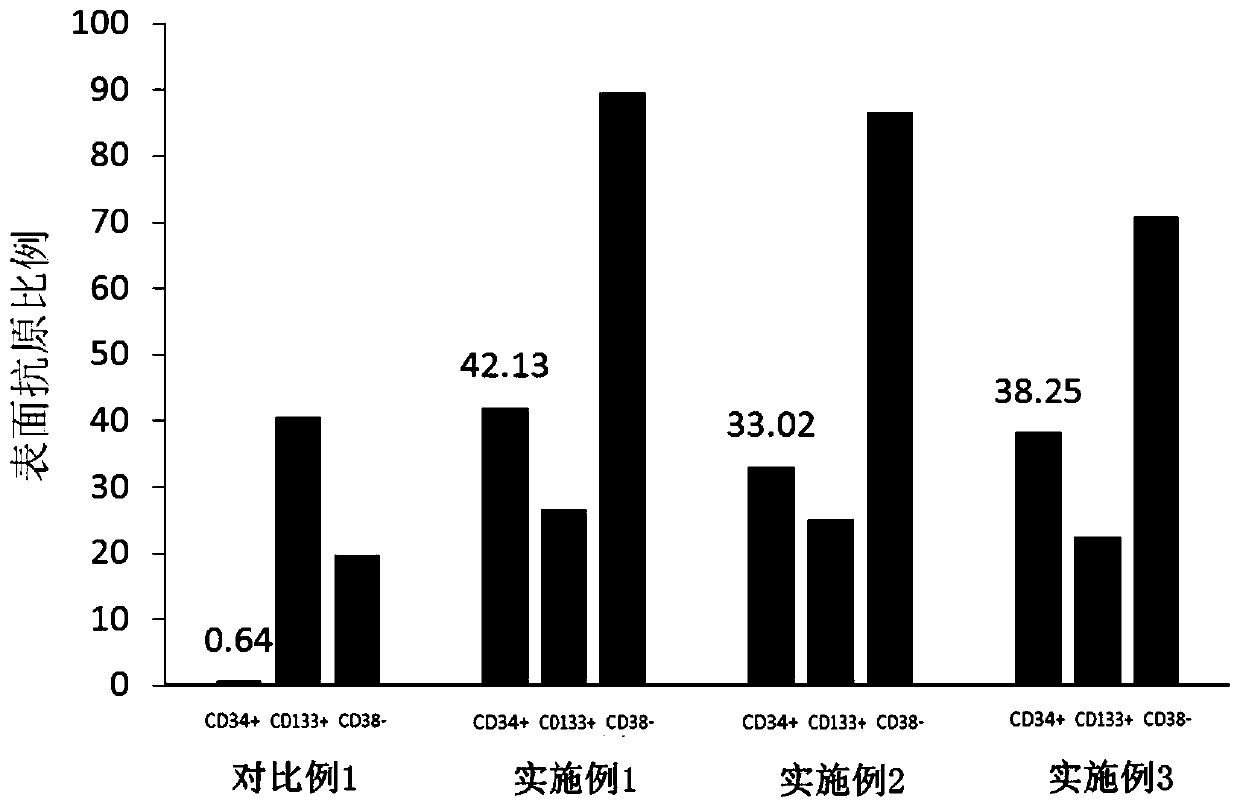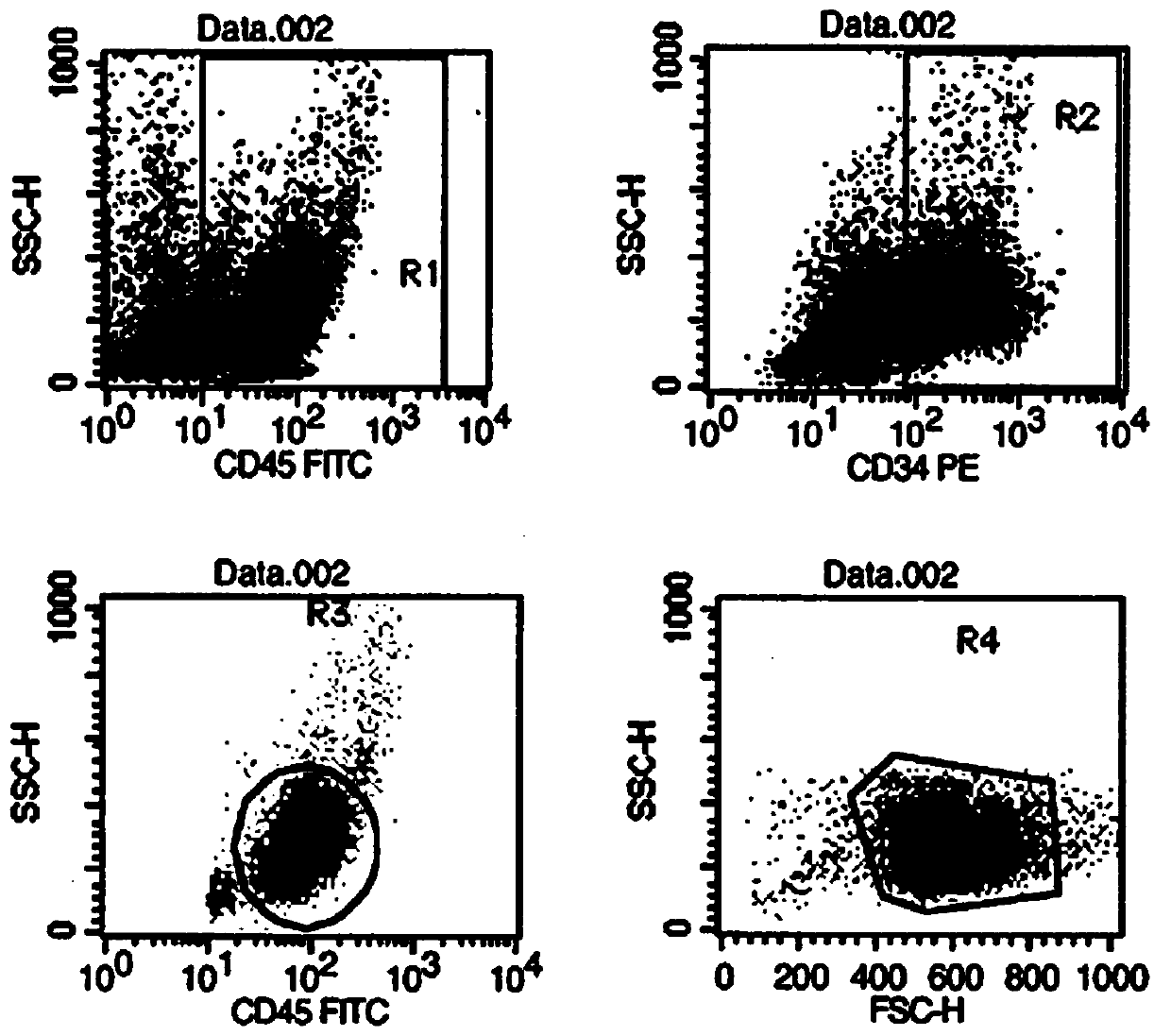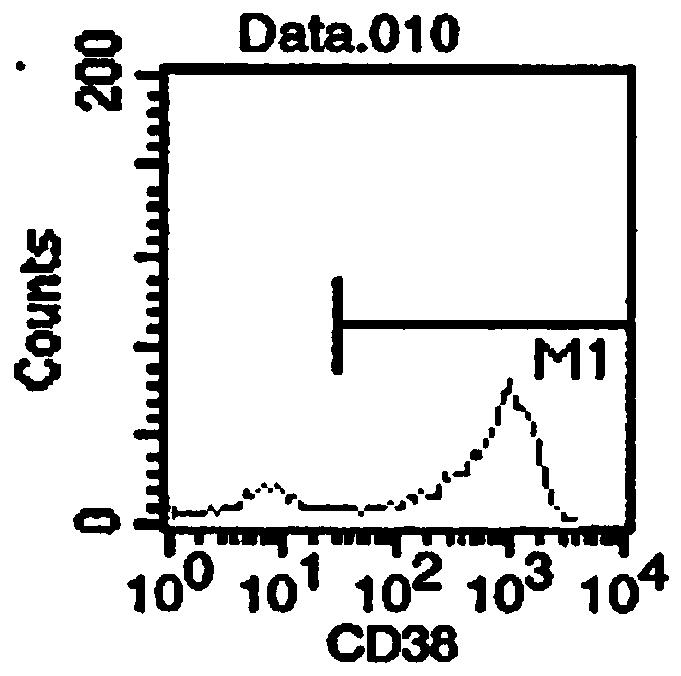Method for amplifying placenta-derived hematopoietic stem cells
A technology of hematopoietic stem cells and embryonic stem cells, which is applied in the field of biomedicine, can solve the problems that the number and speed of cell expansion cannot meet the requirements, the failure of hematopoietic stem cell transplantation, and the poor growth state of cells, so as to reduce production costs and reduce human resources Wasteful, Obvious Effects
- Summary
- Abstract
- Description
- Claims
- Application Information
AI Technical Summary
Problems solved by technology
Method used
Image
Examples
Embodiment 1
[0050] Example 1: Example of Expansion of Placenta-Derived Hematopoietic Stem Cells
[0051] 1. Pretreatment: Embryonic stem cells qualified for separation and detection were mixed with 2×10 6 Cells were inoculated into a T75 culture flask, and MSC medium was added. After the cells reached a confluence of about 90%, the medium was removed (the adherent cells could not be washed), and the culture flask was quickly frozen in a -80°C refrigerator for 10 minutes and then taken out. After standing at room temperature for 10 minutes, put it into the -80°C refrigerator again, and freeze and thaw repeatedly 3 times before using it for later use.
[0052] 2. Plasma separation: put the separated placental blood into a 50ml centrifuge tube, after balancing, put it in a centrifuge (2000rmp, 15min, room temperature, rise 8 fall 7), separate the plasma and blood cells, and inactivate the plasma at 56°C After 30 minutes, centrifuge to remove the precipitate (3000rmp, 5min, room temperature,...
Embodiment 2
[0059] Example 2: Example of Expansion of Placenta-Derived Hematopoietic Stem Cells
[0060] This embodiment is basically the same as Embodiment 1, the difference is:
[0061] In the pretreatment, the fusion degree of the embryonic stem cells was 80%, and the alternating freezing treatment and room temperature storage treatment were repeated twice, and the duration of freezing treatment was 15 minutes, and the duration of room temperature storage treatment was 15 minutes.
[0062] In the plasma separation, the temperature of the inactivated plasma was 55°C for 40 min.
[0063] After the experiment, the collected cells (which contain a large number of hematopoietic stem cells) were sent to flow cytometry (CD34+, CD38-, CD133+) after counting (for the experimental results, see figure 1 , Figure 6 , Figure 7 and Figure 8 ), take an appropriate amount of cells and send them to the colony (experimental results are shown in Table 1 and Figure 9 ), and calculate the cell exp...
Embodiment 3
[0064] Example 3: Example of Expansion of Placenta-Derived Hematopoietic Stem Cells
[0065] This embodiment is basically the same as Embodiment 1, the difference is:
[0066] In the pretreatment, the confluence of the embryonic stem cells was 85%, and the alternate freezing treatment and room temperature storage treatment were repeated twice. In the plasma separation, the temperature of the inactivated plasma was 58°C and the duration was 20 min.
[0067] After the experiment, the collected cells (which contain a large number of hematopoietic stem cells) were sent to flow cytometry (CD34+, CD38-, CD133+) after counting (for the experimental results, see figure 1 , Figure 10 , Figure 11 and Figure 12 ), take an appropriate amount of cells and send them to the colony (experimental results are shown in Table 1 and Figure 13 ), and calculate the cell expansion multiple and CD34 positive rate (see Table 2 for the experimental results).
PUM
 Login to View More
Login to View More Abstract
Description
Claims
Application Information
 Login to View More
Login to View More - R&D
- Intellectual Property
- Life Sciences
- Materials
- Tech Scout
- Unparalleled Data Quality
- Higher Quality Content
- 60% Fewer Hallucinations
Browse by: Latest US Patents, China's latest patents, Technical Efficacy Thesaurus, Application Domain, Technology Topic, Popular Technical Reports.
© 2025 PatSnap. All rights reserved.Legal|Privacy policy|Modern Slavery Act Transparency Statement|Sitemap|About US| Contact US: help@patsnap.com



